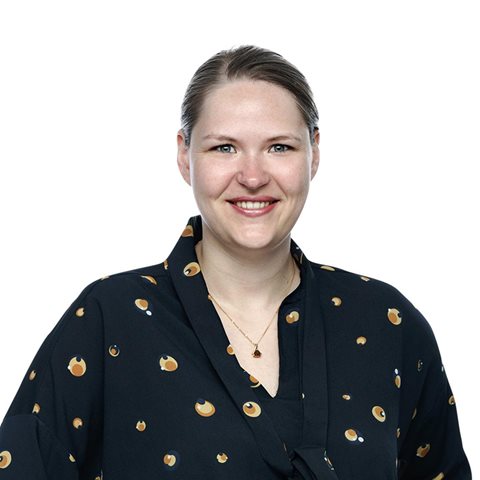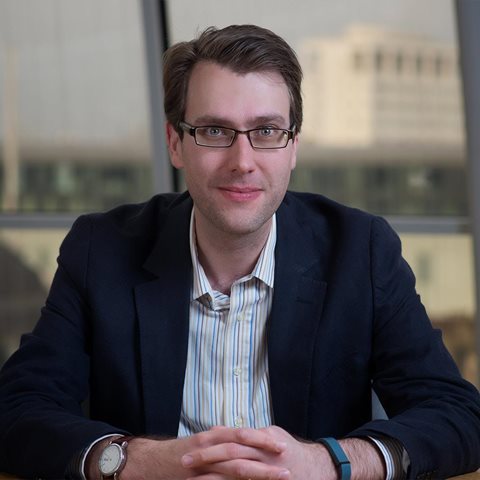Energy companies are facing major challenges. The COVID-19 pandemic has significantly shifted energy-demand curves, cost management needs to be resilient to commodity price cycles, and technological advancements are reshaping the industry. In addition, a finite global carbon budget and an impending energy transition present the biggest challenges yet for the industry. Energy companies need to respond quickly; survival will require a transformation, not incremental change.
bp has recognized the need for bold action. At the start of 2020, new CEO Bernard Looney announced an updated purpose for the company: to reimagine energy for people and the planet and to be a net-zero company by 2050 or sooner (see sidebar, “bp’s new purpose”). To achieve these goals, bp would have to shift from a traditional business model to a much more focused and integrated organization. Bernard described this radical shift as “reinventing bp.”
The company already had a head start: bp started the transformation journey in its upstream business in 2016, founded on agile ways of working and accompanied by investments in digital technology and by ways of working that could spur ongoing growth and innovation. The “Reinvent bp” program in 2020 amplified this experience to redesign Production & Operations (P&O) around an agile operating model with mission-driven, crossdisciplinary teams. These teams—or squads—are laser-focused on value, pursuing high-priority initiatives to optimize current assets and harness future opportunities.
Several executives who spearheaded bp’s adoption of agility discuss the company’s transformation from its initial start in 2016 to its broader rollout.
McKinsey: Why did you start this transformation?
Gordon Birrell: With the pace of change in the world right now, the old hierarchical, top-down management of day-to-day operations was too slow. We needed to drive awareness and ownership of the business deep into the organization. That meant reinventing bp with a new organization and fundamental changes to how we work (Exhibit 1).

We were confident a new agile organizational structure at the heart of our operating model would allow us to break down silos, move faster, and reallocate our people and resources. I believe we are the first energy company to organize for agility in this way. This model allows us to apply technical excellence through the disciplines while quickly deploying expertise for the highest-value opportunities. It has sped up decision making on complex issues and enabled rapid technical responses.
Although it was a big step for bp, we had already deployed a successful frontrunner in Azerbaijan with impressive results: a more motivated workforce, faster decision times, and an expected 20 percent improvement in productivity. We learned a lot from that experience—and it proved to us that agility could work at scale.
Things are moving quickly. We already have around 700 agile squads across P&O, maintenance, wells, projects, and subsurface aligned to clear objectives and to prioritize high-value work. By the end of this year, we expect to have more than 14,000 people working in squads across bp.
We are seeing the success of this right now. One recent story that comes to mind is our project teams that started using agility to bring new subsea tiebacks online quicker— they called them “fast-paced tiebacks.” While this was already a high-performing team, they achieved an average improvement in cycle time of ten months across project execution and operation. This was not a one-off experience; this cycle time improvement continued across the full program of seven tiebacks that year.
McKinsey: How did you get started, and when did you know agility could work for you?
Ian Cavanagh: When we began our transformation in the upstream part of the organization, we asked ourselves two questions: what would it take to fundamentally improve business performance, and how do we want it to feel to work here? We took inspiration from other industries and companies. We looked at tech companies in Silicon Valley, we visited banks, we learned from other big engineering companies, and we adapted their experiences to our own industry. We also looked across bp and learned from our colleagues in the downstream business to create a better sense of cost discipline and ownership. This helped us focus our program on what we believed would make the most difference—digital, mindset, and agility.
There was an air of mystery about agility; it was easier for people to understand the benefits of investing in technology and dialing up certain behaviors. For agility, the question was, “How can we, as a large company, retain what’s important to us—our management systems, professionalism, risk management, and quality—but apply them in a nimble way, like much smaller companies do?” That’s the magic here.
We started by dipping our toes in the water rather than jumping straight in. We launched some pilots and, as the experience of that team grew, others were eager to adopt this approach because they could see the pace of decision making and energy levels at a totally different scale. As one of the first, our North Sea business initially trained four teams in the scrum methodology. We saw improvements of 40 to 50 percent in cycle times while maintaining focus on safety and quality. Employee experience also started to improve. Based on these early success stories, we then rolled out these tools, approaches, and capabilities more widely to locations across the world.
Donna Riley: At this stage, we were less interested in structural changes and more in breaking through the traditional hierarchical culture and moving to an environment where people felt trusted and empowered. We wanted this effort to feel different from previous transformation initiatives. We ran it largely on a “pull” basis—with teams choosing to opt in, experiment, and learn.
Alongside the agility pilots and digital investment, we launched our biggest leadership development program in over a decade—“Your Leadership, Our Future.” We designed this program around the mindsets and leadership behaviors we knew would be vital to achieve the transformation bp needed. Around 3,000 of our leaders attended the program, and many of them are leading teams in the reinvented bp, championing agility and empowering people to succeed.
We made enormous progress in a short time, but we could see a limit to what we could really achieve through agile techniques and leadership behaviors. To make this change sustainable, we had to start thinking about how to build agility into the fabric of our processes, performance management, and culture.
McKinsey: What did you do to get alignment and gain momentum on organizing for agility?
Gary Jones: We wanted to test the benefits that agility could bring at scale, so we launched a frontrunner in our Azerbaijan, Georgia, and Turkey (AGT) business. The frontrunner comprised 75 people with a shared mission of providing onshore production management, operations, and maintenance support for six offshore platforms. We were getting ready to launch the frontrunner right as the COVID-19 pandemic hit. We had a choice: delay, or adapt our plans and get started anyway. Fortunately, we decided to go ahead. The frontrunner allowed us to test not only a new way of working but also what this could look like in a world of remote working.
What excited me most about the frontrunner was that it gave us the opportunity to test what it would be like if everybody adopted this way of working all the time. There were a couple of instances when we started to detect it was really working. One was literally how people felt. We did some surveys, and it was so clear people did not want to go back to the old way of working, despite some initial challenges. They liked the control and the transparency of what everyone was going to deliver. Another milestone was the reaction of our operational sites, both offshore and at the terminals. Frontline employees really liked the customer focus at the sites and knowing exactly who among the onshore team was dealing with their problems.
We had people from other parts of the company come and talk to the employees who were actually doing agility rather than just hearing about it from leaders or through word of mouth. That is how more and more people started to understand how truly different this way of working was.
Elkhan Mammadov: The frontrunner in Azerbaijan was distinct from the earlier pilots. It was no longer about experimenting and evaluating whether agility could be beneficial but rather about implementing all the components as a system in one organization. This was a true test of structural and process changes, new roles, performance management, and cultural and behavioral expectations (Exhibit 2).

Through the frontrunner we could see significant improvements in business performance. Actually, this way of working probably helped us be more reactive and adaptable during the COVID-19 pandemic, when things seemed to change from day to day. After five months, the organization had accelerated response times from onshore production to offshore by 10 percent, reduced existing anomalies and production-deferral cycle time by 25 percent, decreased the outstanding maintenance backlog by 30 percent, and cut procurement cycle times threefold.
There was also an increase in employee engagement scores for both offshore and onshore employees. All surveyed staff wanted to continue working in the agile way. Crucially, all safety and risk metrics remained stable.
The real breakthrough came when the executive leadership team, CEO, and chairman visited AGT and witnessed firsthand the benefits by speaking to squads that had experienced the new ways of working.
Every day we are seeing more examples of how this new way of working is helping. One of our assets had a 2022 production challenge. We found that one of the critical levers was to increase the well delivery contribution. In the past, this would have been a piece of work delivered across multiple parts of the organization with many teams, interdependencies, and handovers. In the new model, our subsurface and wells units stood up a joint squad around a single objective: optimize our reservoir management and business delivery. In just ten days, the team managed to increase the well delivery for 2022 from 19.7 thousand barrels a day to 33.3 thousand barrels a day (a 69 percent increase).
McKinsey: How did you stand up this new operating model after the frontrunner?
Ian Cavanagh: The pilots and the frontrunner showed us what agility could look like for us in our organization and in our industry. It also started to show the tangible benefits in terms of performance as well as creating an environment where our people flourish. By the end of 2019, 350 agile teams had already contributed to more than $1 billion of accelerated delivery through cost savings, engineering innovation, and efficient delivery.
This way of working was not only relevant for our upstream business—we saw the same for our downstream business. We had two complex turnarounds (TARs) scheduled in close succession for one of our refineries. That increases the risks of start-up delays as there was little margin for error in the schedule. We set up an agile working environment to bring two teams together and included experts from one of our other facilities directly in the team. This way of working resulted in a safe start-up from the TAR, largely due to our ability to share learnings and bring a team together with exactly the skills and experience needed.
When Bernard Looney became group CEO in February 2020, we started an ambitious effort to reinvent the entire organization as an integrated energy company. That meant taking our learnings from the past and fundamentally reshaping the organization around end-to-end value chains with mission-focused teams, strengthening our technical disciplines, centralizing activity, digitalizing operations, and focusing on our prioritization and deployment processes.
On January 1, 2021, we implemented agile teams for 7,500 people within P&O, with new roles and reporting lines. This approach was still new to many people, so we provided role-specific training and onboarding sessions to ensure people understood their new role and the operating model, as well as to give them the opportunity to ask questions and learn from one another.
For me, five things are on my mind when thinking about what we did:
- Communication and engagement are critical. An agile transformation really affects the day-to-day experience of almost every employee. It is critical to be transparent about what people can expect. Employees who had been involved in the pilots and frontrunner talked to their colleagues about how their day was different, how their roles were more rewarding and satisfying, how they got decisions quicker, and how they felt more connected to each other.
- Culture eats structure for breakfast. It is easy to change a reporting line, but changing culture and behavior is far more difficult. An agile transformation succeeds or fails with leaders showing up as role models. For example, leaders should not require prereads and update sessions; instead, they should walk the floor and join the sprint review sessions to understand how they can help teams. Our biggest focus continues to be supporting our leaders in getting comfortable and understanding their role in the new organization.
- Provide people with training options. It is very important to give employees the space they need to adjust. There are new roles, new ways of working, and slightly changed expectations. Rather than pushing a lot of training, we made courses available online in a self-service format so people could access the right training depending on the maturity of their squad.
- Make sure you support with robust change management. In our industry in particular, risk and safety are always top of mind. Throughout the transformation, we kept focus on our safety-critical processes and roles to make sure we maintained the highest standards.
- Don’t forget to build the supporting systems and processes. Once the agile organization is set up, systems must support the new ways of working rather than complicating them. For example, we are changing performance reviews and career paths to match the new model.
A lot of this was about getting teams to share their own experiences and stories with each other. An example of one of those powerful stories is from one of our North Sea assets. We had experienced production deferrals of ten thousand barrels of oil equivalent per day (BOED) due to issues with the produced water reinjection (PWRI) system. Our new cross-functional production management squad worked across the four choke points to identify system constraints as well as opportunities to increase PWRI capacity, add production, and shelter planned well tests. Working closely with the offshore team, the squad was able to make decisions promptly. The result was an impressive increase of three thousand BOED within two weeks.
Sobana Poopalasundaram: We could not have made this progress without providing our teams with hands-on support and coaching. It was crucial to have the right number and quality of agility coaches from the outset so, in addition to our external coaches, we created an in-house agility center of expertise. We selected 25 members of our technical teams to be part of the first cohort of coaches in 2019. Since then, we’ve expanded the team and now have a mix of internal and external team members.
In addition, prioritization is a critical part of the new operating model. It ensures all of us are pulling in the same direction and enables us to manage our workload and activities better. Historically, a big challenge has been figuring out what not to do, so we sought to improve prioritization at all levels of the organization.
Across all of P&O, we wanted to empower businesses to rely on central functions where they needed help. We made changes to our annual planning event, putting our assets at the heart of it as the unit of value. To get a baseline on our track record in terms of prioritization, we examined last year’s portfolio. One of our businesses had been able to complete about 15 percent of the priority programs; 65 percent were still in flight, and 20 percent had not been started. Anecdotally, this is true in all of them. This year, we started to take our capacity constraints into account when looking at activity on top of our baseload.
At the business level, we piloted the quarterly business review (QBR) in Azerbaijan as well as in Trinidad and Tobago (Exhibit 3). The beauty of the QBR is it provides that linkage between the overall business priorities of the region with the individual priorities of parts of the business. Each area of the business came together to align on the top four priorities for the upcoming quarter. These conversations integrated a bottom-up view of capacity from discipline and squad leads, as well as high-level business priorities set by the leadership team. Each unit then created a small number of objectives and key results to plan how they will deliver the priorities and measure success. This approach provides transparency into whether we are deploying our resources in the right way.

At team and unit level, we needed to make the workload more sustainable. Agility coaches worked with squads to truly understand their capacity and size their activity for each sprint. We didn’t prescribe one capacity-management technique for the organization; rather, teams and units experimented and iterated to improve their planning accuracy. Simple conversations at the start of sprints, such as documenting planned vacation for each team member and “T-shirt sizing” tasks, created visibility and helped team members make their workload more manageable.
McKinsey: How did your leaders change their operating model?
Donna Riley: The biggest shift leaders had to make was not around structure or processes—it was behavior and culture. An agile organization requires a fundamentally different approach. The biggest change for leaders is to learn how to step back. Leaders decide the “what,” but the squads agree how to deliver. For the leader, it’s about empowering teams to deliver and coaching where needed. It’s a long way from the traditional command-and-control environment.
Gary Jones: We like to call it servant leadership, and it turns the whole pyramid leadership structure on its head. The people doing the work are key, and everyone else supports them. I think of it like gardening. You’ve got to prepare the soil and put the plants in the right location, and then you’ve got to water them and nurture them. That produces fantastic outcomes. Servant leadership, role-modeling, and listening to the people who understand how the work gets done are all part of this new approach.
As an executive team, we are also taking our own medicine. We have our own biweekly stand-ups as a team to discuss our biggest blockers and dependencies, and we’re very conscious of how we affect the organization.
Elkhan Mammadov: My biggest change was giving up control and delegating. It wasn’t easy, but that’s exactly the change that is needed for the agile setup. Instead of asking teams for updates and reports, leaders go to the sprint reviews and see the work in progress. They focus on giving context, setting the mission, and defining the purpose and intent. Leaders ask, “How can I help?” when engaging with teams and focus on tackling problems. Teams are empowered to figure out how to deliver the mission within the boundaries defined by standard processes.
To achieve this change, we introduced a set of leadership expectations and ways of working in line with the new operating model. Our leaders are actively supported by our agility coaches every day to reflect on how to behave during agile ceremonies. In addition, we have organized a series of leadership webinars, nudges, and peer groups so people can share their experiences.
McKinsey: What advice would you share with others thinking about starting on this journey?
Gary Jones: Pace is important. An agile transformation is about emotions, mindsets, and leadership change, and it takes time to absorb. That happens through training as well as discussing ideas and getting on board with them as a leadership team. It’s not just about a presentation; it’s about talking to people, getting their questions, taking out the terminology, and linking their business to the strategy and their impact on it. It’s more important to lay the foundations on which you can build and be patient. This journey takes years, not weeks or months.
Elkhan Mammadov: My advice for the leaders of other companies that are preparing themselves for agile transformation is to be ready as early as possible for mindset shifts because that’s really needed. It’s not easy to do. Be transparent with your team and with your organization, and be bold in your experiments.
Sobana Poopalasundaram: Leaders should also seek to hold onto things that already work and to start small. Create proof points that allow confidence—both what works in your company and what gives you the outcomes you are seeking. Companies will often need to adjust their way of working with the right practices, tools, and behaviors.
Donna Riley: Organizations often swing from centralized to decentralized, from asset to functional. With agility, you get the best of all worlds: you can bring together multidisciplinary teams flexibly, you can collaborate across teams and businesses, and you can keep your stable backbone by being organized by discipline. However, it takes time to get it right and requires teams of people who lean into change, experience, and learning as they go.
McKinsey: What do the next steps look like for bp?
Ian Cavanagh: We need to recognize that this was a very fundamental change for our organization, a material shift in our operating model from top to bottom. Across the company, we moved away from our historic segment organization (upstream and downstream) to an integrated energy company. We rationalized leadership roles, flattened the organization, and created new business and functional groupings. We pulled through talent and made material gains on overall diversity. This level of change was unprecedented in our history, and we fully recognize it takes continued support and investment for this to truly feel simpler and more impactful at all levels.
One advantage is that now all levels of the organization can surface areas of improvement more quickly and easily. We are also more flexible to act on this feedback than some traditional approaches. As conditions change and as we learn, we will continue to refine our operating model. We now have an engine for driving improvements in organizational effectiveness and efficiency.
From this strong foundation, we have an important agenda in front of us: continuing to embed culture and behaviors, clarifying career paths, and ensuring our workflows and performance systems are fully optimized for our new way of working. Implementing such a big change in essentially a remote work setting has been an incredible achievement, and I give massive credit to all in the organization for delivering such strong safety, change management, and performance outcomes through this period. Looking forward, as we implement our new hybrid (office and home) working model for many of our staff, it gives us the added benefits of face-to-face interactions within our teams, with our key stakeholders, and our coaches.
P&O is not the only part of bp that has been progressing agility as a key part of its transformation, and we have strong networks in place to share learning, not least through our bp-wide Agility Centre of Expertise. While one size definitely does not fit all, the learnings have proven very transferrable.
We are proud of our progress so far. It began with an understanding of the necessity of change and a belief in a way of working—an operating model—that is already playing a key role in supporting the organization to deliver improvements in performance and creating an environment within the company for our teams to be the best they can be.



